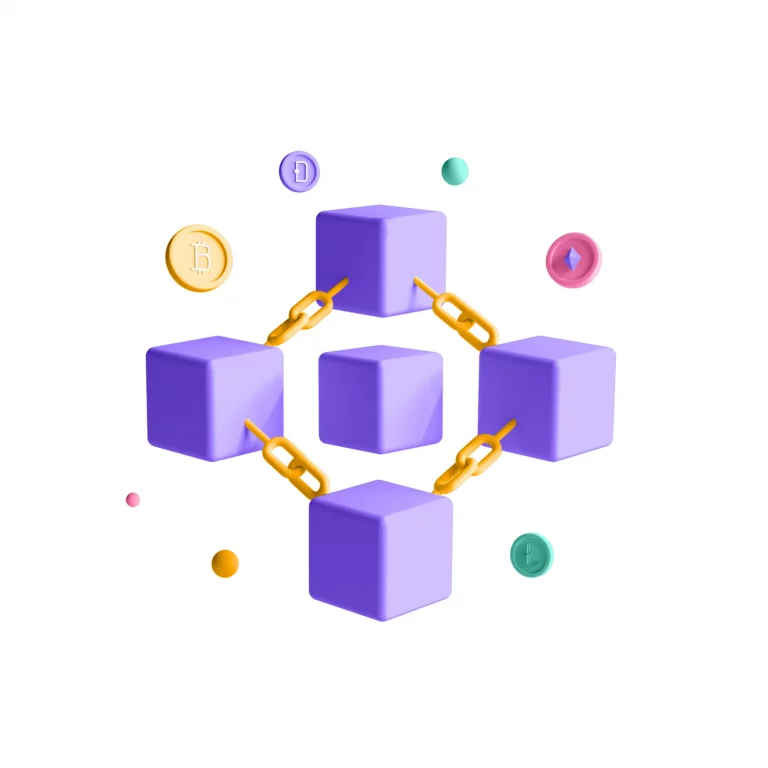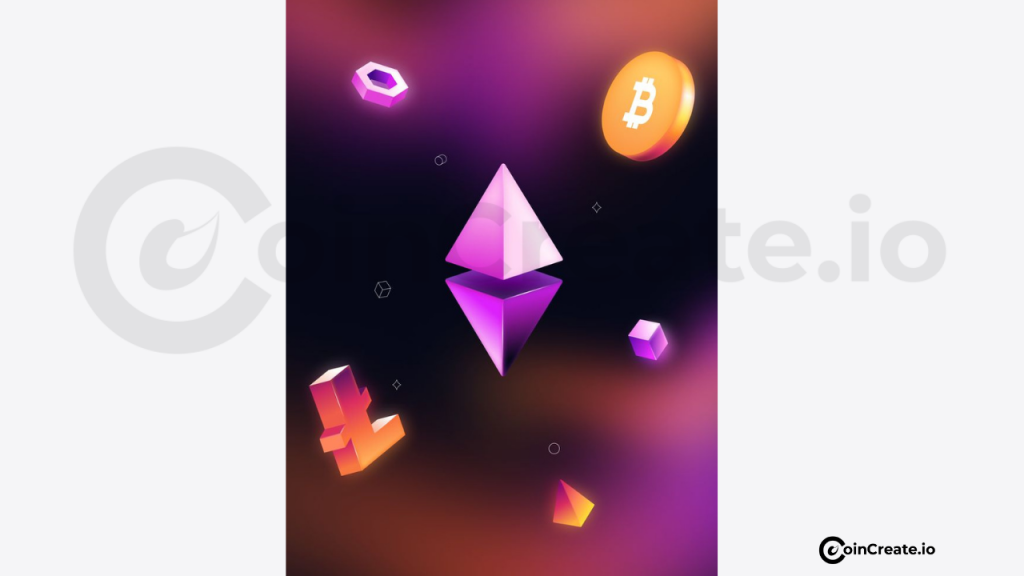Blockchain Technology: What It Is and How It Works
Blockchain technology is like a digital notebook that everyone can see but no one can erase. It keeps track of transactions across a network of computers. Each transaction is bundled into a “block,” and these blocks are linked together to form a “chain.” This setup ensures that once something is written down, it can’t be changed or deleted, making blockchain a secure way to track ownership and transactions of digital assets like cryptocurrencies, including Bitcoin and Ethereum.

How Does Blockchain Work?
Blockchain works through a series of steps that ensure transactions are secure, clear, and permanent. Here’s a simple breakdown of how it functions:
Key Parts of Blockchain
- Blocks: Each block contains a list of transactions, the time they happened, and a unique code called a cryptographic hash. This hash acts like a digital fingerprint for the block and links it to the previous block. If anyone tries to change the information in a block, the hash changes too, making it easy to spot tampering.
- Nodes: These are individual computers that make up the blockchain network. They keep a copy of the entire blockchain and check if new transactions are valid. When someone wants to make a transaction, it gets sent to all nodes for verification.
- Miners: Miners are special nodes that validate new transactions and add them to the blockchain. They do this by solving tricky math problems in a process called proof of work. When they successfully validate a block of transactions, they add it to the chain and earn cryptocurrency as a reward.
The Blockchain Process
- Starting a Transaction: A user wants to send cryptocurrency and creates a request that includes who is sending it, who is receiving it, how much is being sent, and when.
- Verifying the Transaction: The request goes out to all nodes in the network. Each node checks if the sender has enough funds and if both parties are registered users.
- Creating a Block: Once verified, these transactions sit in a temporary area until there are enough of them to create a new block.
- Reaching Consensus: To add this block to the blockchain, all nodes must agree on its validity. This usually happens through methods like proof of work or proof of stake, where nodes compete to solve puzzles.
- Linking Blocks: The new block is connected to the previous one using its hash value, creating an unchangeable chain. If someone tried to modify one block, they would have to change all subsequent blocks too—a nearly impossible task.
- Completing the Transaction: Once added to the blockchain, the transaction is permanent. All nodes update their copies of the blockchain so everyone has the same information.
How Blockchain Powers Cryptocurrencies
Blockchain technology is essential for cryptocurrencies like Bitcoin and Ethereum because it provides the infrastructure they need to function securely and efficiently.
How Blockchain Supports Cryptocurrencies
- Decentralized Ledger: Think of blockchain as a shared notebook where everyone can see what’s written but no one person controls it. This setup builds trust among users since each participant has their own copy of the blockchain.
- Immutability: Once something is recorded on the blockchain, it can’t be changed or erased. This feature prevents fraud and ensures that digital currency can’t be spent twice.
- Cryptographic Security: Each block is linked using cryptographic hashes that secure data within each block. If someone tried to change one block’s data, they would have to change every subsequent block too something that’s very hard to do.
- Transaction Validation: Transactions are checked by multiple nodes using consensus mechanisms. For Bitcoin, this means miners solve complex math problems (proof of work). Ethereum is moving toward proof of stake, where validators create blocks based on how many coins they hold.
- Smart Contracts: Beyond simple transactions, blockchain allows for smart contracts self-executing agreements that automatically enforce terms when conditions are met. This feature expands what blockchain can do beyond just handling money.
Real-World Uses of Blockchain
Blockchain technology has many applications beyond just cryptocurrencies; it’s making waves in various sectors by improving transparency, security, and efficiency:
- Supply Chain Management: Blockchain helps companies track products from their origin to consumers. For example, Walmart uses it to trace leafy greens back through their supply chain quickly if there’s contamination.
- Healthcare: In healthcare, blockchain can securely manage patient records so that only authorized users can access them while keeping data intact. Platforms like Medicalchain allow patients control over who sees their health information.
- Finance: Blockchain makes financial transactions faster and cheaper by cutting out middlemen like banks for things such as cross-border payments. It also helps with customer verification processes (KYC), saving time and reducing costs.
- Voting Systems: Using blockchain for voting can enhance security and transparency in elections. With platforms like MiVote, voters can cast their votes securely while ensuring their choices remain private.
- Digital Identity Management: Blockchain offers secure ways for individuals to manage their identities online, reducing identity theft risks. Initiatives like ID2020 aim to provide digital identities for those without formal identification.
Benefits of Blockchain Technology
Blockchain technology brings numerous advantages that make it revolutionary across different industries:
- Transparency: All transactions are recorded on a public ledger visible to everyone involved, which builds trust since anyone can verify transaction authenticity at any time.
- Security: Blockchain uses cryptographic techniques to protect data from unauthorized access or tampering. Each transaction is encrypted and linked together in such a way that altering any information becomes extremely difficult.
- Decentralization: No single entity controls the entire system; instead, multiple nodes verify transactions independently. This reduces fraud risk and empowers users by allowing direct participation without intermediaries.
- Immutability: Once data is on the blockchain, it’s permanent—ensuring trustworthiness in applications where data integrity is crucial (like finance or healthcare).
- Efficiency: By automating processes and reducing reliance on middlemen, blockchain allows for faster transactions at lower costs compared to traditional systems.
- Cost Reduction: Streamlining processes leads to significant cost savings for businesses by minimizing manual tasks and errors associated with human involvement.
Blockchain’s Role in Web3
Blockchain technology is fundamentally changing how we think about the internet with Web3—a new version focused on decentralization that gives power back to users:
- Decentralized Applications (dApps): These apps run on peer-to-peer networks instead of relying on central servers like traditional apps do—keeping user data safe from manipulation while promoting privacy and transparency.
- Decentralized Identities: In Web3, individuals manage their own digital identities without large corporations controlling their data—allowing for better privacy and security against data breaches.
- Decentralized Autonomous Organizations (DAOs): DAOs use smart contracts on blockchains for governance without centralized leadership—empowering communities to make decisions collectively about resources or projects they care about.
- Interoperability and Security: Blockchain enables different systems within Web3 to work together smoothly while ensuring secure transactions that protect user data from malicious attacks.
The Future of Blockchain Technology
Blockchain technology holds great promise for transforming industries as we move forward:
- Innovations with AI Integration: Combining AI with blockchain enhances data management while ensuring privacy—crucial for sectors like healthcare where sensitive information is involved.
- Web3 Development: As Web3 evolves toward decentralization, blockchain will enable new social platforms that empower users with more control over their online interactions without relying on big corporations.
- Interoperability Trends: Future innovations will focus on making different blockchains work together seamlessly—creating opportunities for cross-chain applications that enhance user experience across platforms.
- Growing Institutional Interest: More businesses and governments are recognizing blockchain’s potential—leading to increased investment in this technology across various sectors as they seek innovative solutions for efficiency and security challenges ahead.
Blockchain Protocols and Platforms
Blockchain technology has opened the door to a variety of protocols and platforms that make decentralized systems work smoothly. Let’s break down some of the most popular blockchain protocols Ethereum, Hyperledger, Solana, and Polkadot in simple terms, highlighting what makes each of them special.
- Ethereum: The Smart Contract Pioneer
Think of Ethereum as a versatile playground for developers. It’s one of the most famous blockchain platforms, mainly known for its ability to run smart contracts self-executing agreements that automatically enforce rules without needing a middleman. Originally, Ethereum used a method called Proof of Work (PoW) to validate transactions, but it’s now shifting to Proof of Stake (PoS) with Ethereum 2.0.
This change aims to make the network faster and more energy-efficient. Developers can write complex applications using a programming language called Solidity. This flexibility has made Ethereum a favorite for creating all sorts of innovative applications, from finance solutions to games. It’s like having a toolbox that allows you to build anything you can imagine!
- Hyperledger: The Business Blockchain
Hyperledger is a bit different; it’s not just for cryptocurrencies. It’s an open-source project backed by the Linux Foundation that focuses on creating blockchain solutions for businesses. Hyperledger helps companies build permissioned blockchains, meaning only authorized users can access the data. One popular project within hyperledger is hyperledger Fabric, which is designed to be modular and scalable.
This makes it perfect for industries like supply chain management and healthcare, where secure data sharing is crucial. With various ways to validate transactions, Hyperledger ensures that everything runs smoothly and securely, making it a go-to choice for businesses looking to share data safely.
- Solana: Speedy Transactions
If you’re looking for speed, Solana is the blockchain platform to watch. Known for its lightning-fast transaction speeds and low costs, Solana uses a unique method called Proof of History (PoH) combined with Proof of Stake. This allows it to handle thousands of transactions every second! This impressive speed makes Solana ideal for applications in areas like decentralized finance (DeFi) and non-fungible tokens (NFTs). Developers love Solana because they can create fast and affordable applications that cater to users who want quick results without breaking the bank.
- Polkadot: Connecting Blockchains
Polkadot takes things a step further by allowing different blockchains to work together seamlessly. Imagine Polkadot as a bridge connecting various islands (or blockchains) so they can share information easily. It features something called parachains, which are individual blockchains that can communicate with each other through the main Polkadot relay chain. This setup boosts scalability and flexibility, enabling developers to create specialized blockchains tailored to specific needs while still benefiting from Polkadot’s overall security. With Polkadot, the possibilities for cross-chain applications are endless, opening up new ways for different blockchain ecosystems to collaborate.

